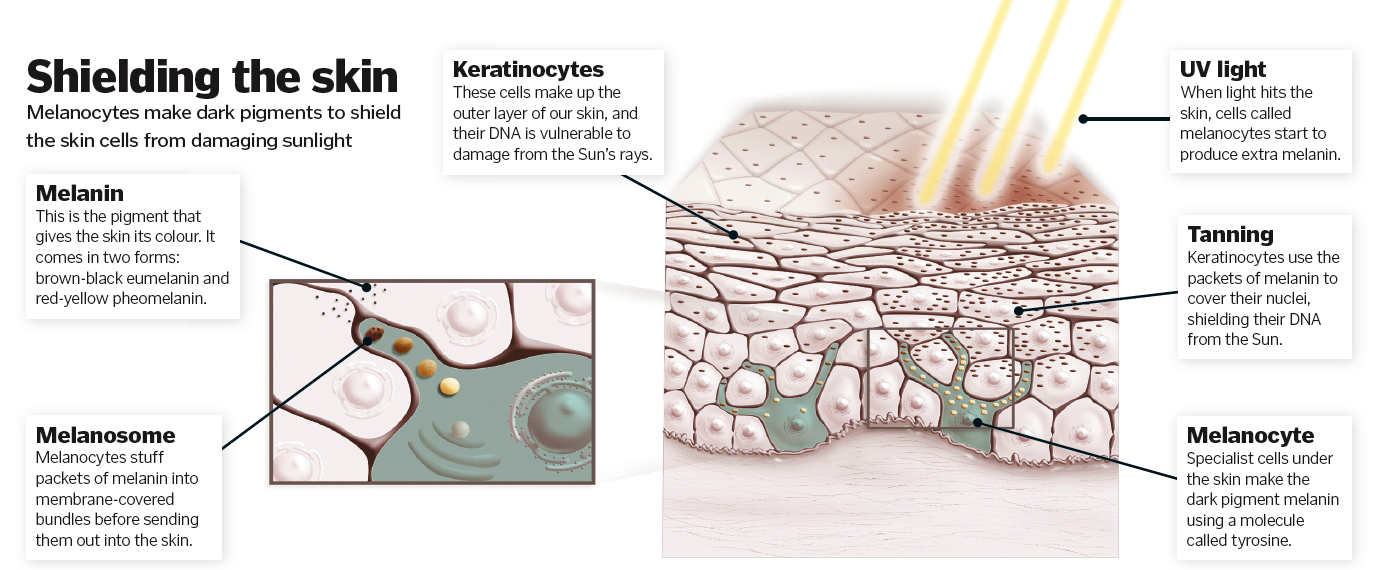What if we could filter out all UV light?
by Scott Dutfield · 28/01/2019

Blocking UV would do away with skin cancer and premature ageing, but at what cost?
Scientists split UV into three bands of wavelengths based on their behaviour. At the most energetic end – 100 to 290 nanometres – there’s UVC light; it has the shortest wavelengths and does the most harm. Luckily, the atmosphere filters it all out before it gets to the ground. Between 290 and 320 nanometres, there’s UVB light; this is the one that tans and burns the skin and causes cancer. The atmosphere gets rid of around 95 per cent of it, and it can’t travel far into our bodies, but the little that gets through is enough to do us harm. Finally, from 320 to 400 nanometres there’s UVA; it passes through the atmosphere and through the skin causing damage to the structures that support our cells. This leads to premature ageing, cataracts and sunburn. Blocking this light could save us from having to apply sunscreen, but it wouldn’t all be positive. Our bodies use UVA light to make vitamin D, and lots of animals also rely on UV for survival. Butterflies use UV in their wing patterns to attract a mate, flowers use it in their petals to attract bees, and sockeye salmon use it to find food. In the Arctic, UV light allows reindeer to spot wolves, whose fur and urine show up black against the snow. And that’s just the tip of the iceberg; research is revealing that dozens of other species can see into the UV spectrum. If we got rid of UV light they’d all be left in the dark.

What does UV light do to DNA?
When photons of light hit DNA, they heat it up and make it more likely to react with molecules around it. Most of the time the heat is simply released and the DNA goes back to normal, but sometimes two adjacent DNA letters get stuck together. There are four DNA letters – adenine, cytosine, guanine and thymine – and it is cytosine and thymine that are most vulnerable. Their ring-shaped structures can get stuck together, and this makes it hard for the cell’s machinery to read the genetic code. When it gets to a pair of stuck rings, it can’t work out the sequence, so it has to guess. This can introduce mistakes into the code as the cell copies its genes, and these mistakes can change the way that proteins work. This can then change the way that cells work, leading to skin cancer.

This article was originally published in How It Works issue 118, written by Laura Mears
For more science and technology articles, pick up the latest copy of How It Works from all good retailers or from our website now. If you have a tablet or smartphone, you can also download the digital version onto your iOS or Android device. To make sure you never miss an issue of How It Works magazine, subscribe today!





